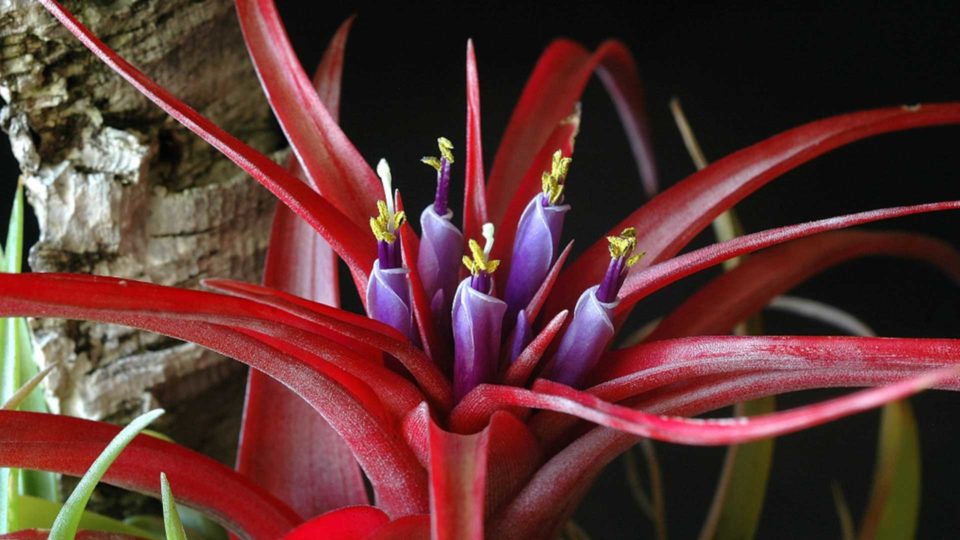Bromelias
Distribution: They are distributed in tropical climates of warm-temperate zones, native to the New World. It extends from the southern United States to southeastern South America.
Characteristics: They are monocotyledonous plants that consist of terrestrial or epiphytic perennial herbs, or shrubs, mostly have short stems. Its leaves form a basal rosette, with short internodes and progressively longer towards the inflorescence, being enveloping at the base and opening up, its leaves are corrugated sheets that ends at an apex. They form “deposits or cisterns” of rainwater and humus and organic remains of atmospheric dust. Its flowers are perfect, arranged in terminal inflorescences, being able to be spikes, clusters or panicles.
Importance: They allow to store organic matter and fluids that insects and birds take advantage of to supplement their diet. Ananas comosus (pineapple), is an important bromeliad for its commercial use as a crop for food, since it is a fruit composed of fused berries associated with a shaft of fleshy and slightly fibrous inflorescence. Its cultivation has spread to many tropical countries.
These are the species of bromeliads native to the Lake Yojoa region:
- Catopsis brevifolia
- Catopsis morreniana
- Catopsis nutans
- Guzmania monostachia
- Catopsis apicroides —- Catopsis sessiliflora
- Tillandsia brachycaulos
- Tillandsia festucoides
- Tillandsia pruinosa
- Tillandsia punctulata
- Tillandsia schiedeana
- Tillandsia standleyana
- Tillandsia usneoides
- Tillandsia variabilis
- Tillandsia vestita
- Vriesea heliconioides.
- Distribution: They are distributed in tropical climates of warm-temperate zones, native to the New World. It extends from the southern United States to southeastern South America. […]

